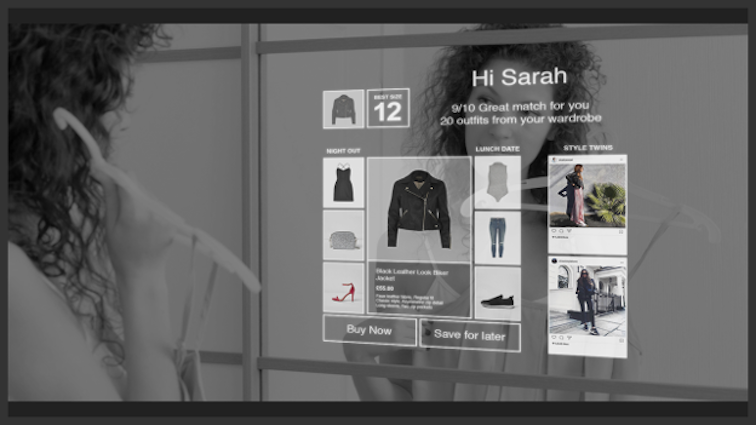With technology developing at a rapid pace, how best to target customers and deliver products and experiences that are truly relevant to them is a hotly debated topic.
Segmentation vs Personalization
Many businesses talk about the importance of segmentation and the positive impact it can have. In fact, organisations that leverage customer segmentation are likely to outperform peers who don’t by 11 % in sales growth (5% in operating margin improvements).
However, organisations that leverage personalization outperform peers by 5 times that number, 66% in sales growth (24% in operating profit growth).
Segmentation and personalization are not the same. They do different things and have a very different impact on results. It is key, therefore, to understand each, their potential, their limitations and the range of value they can contribute.
Segmentation
Segmentation has evolved over recent years – from more traditional persona-based segmentation to present day microsegments.
Traditional segmentation focuses mainly on ‘the who’. It creates a top-level view of the target customer base (based on attributes such as gender, age, location, spend, etc), usually grouped by personas.
Microsegments allow for more diverse groupings and can include a range of factors including behavioral activity (for example, visited n times, viewed x, bought y).
What are the Benefits and Limitations?
Segmentation can inform product market strategy by enabling customer mapping to product, pricing and communication channels.
However, it is rather static and doesn’t take into consideration user behavior nor the multiple touch points (online, mobile, in-store, search, social media) that influence a customers’ micro-moments such as help deciding what to buy.

Additionally, consumers are rarely part of one segment. They could belong to multiple segments at different times of the day and week. You may have a professional working woman during the week, who runs marathons on weekends and happens to be a mother of 3 children. This is a good example of one person with different behavior patterns, interests and product affinities at different points in time.
This is where ‘what they do’ is more indicative of ‘what will they do next’. There are several more sophisticated segmentation techniques (RFM (recency, frequency, monetary), Behavioral etc) that offer ways to improve conversion rates and targeting compared to traditional buying personas. They use data from customer journeys (such as views online, visits to store, recency, frequency) and journey-based metrics (such as purchases) to either improve on personas – or create ‘microsegments’ and more contextual based content and calls to action.
The Challenges of Segmentation in Fashion Retailing
The above begs the key question - Is it an artificial constraint to segment people at all?
There is little doubt that automated micro-segmentation, done correctly, should deliver improved results over the more static and hypothetical alternatives. However, there is more fluidity and dynamism in our personalities today than ever before, and our customer journeys are individual and growing in complexity.

Our decision making is unique, as is our timing, our sensitivities and our affinities to products and product features. Nowhere is this more pertinent than in fashion retailing.
Here, the customer is shopping in the context of their shape, their size, their confidence, their preferences, the occasion and location of where the item will be worn, what it will be worn with, the weather, what they already own and numerous other considerations. All factors that segmentation cannot know about or respond to.
So, as a fashion retailer, using segmentation might initially get some improvements using automated micro-segments, but you’re not going to make any progress in transforming the understanding of your customers and delivering on their actual wants, which is vital to driving long-term growth and profitability. Only personalization can deliver that.
Personalization
Personalization doesn’t care about putting customers into segments. It concerns itself with collecting data and learning as much as possible about each individual customer, so it can respond to each unique need in real time.

It understands that you are a working woman, a marathon runner and a mother. That you will be buying a tailored suit one day and a biker jacket the next. It knows your likes and dislikes at a feature level, it knows the clothes that suit you best and those you will avoid or return. It saw that you bought the coat you were looking for last week and knows you won’t be buying another for at least a year. It understands that you buy your trainers online and your dresses in-store.
What are the Benefits?
Personalization is smarter and more predictive than segmentation and future-proofs businesses.
It provides each customer with the right product at the right time, specific to their individual need at that moment.
It also creates and aggregates new data sets that give a richer and more real time view of customers and products, which can remove some of the risks around business processes, such as range planning and merchandising.
Because of this, retailers who are not using personalization today or planning to invest in personalization soon, risk losing market share against those who have the head start and are realising their gains.
Personalization can reduce acquisition costs by as much as 50%, lift revenues by 5 to 15%, and increase efficiency by 10-30%. This will continue to improve over the coming years as greater efficiency is introduced into areas such as product range and sell through.
Retailers often view personalization at scale as a daunting undertaking, requiring millions in investments. But successful businesses start small, generate top-line impact quickly—in a matter of weeks —and then it is self-funding after that.
To Conclude…
Segmentation is useful for businesses and will continue to play a role in aligning top line thinking and communication since it’s impossible for a human to keep hundreds of thousands of customers in mind. Personalization, however, is important to (and works brilliantly for) both businesses and customers meaning it has entered the stage of being the dominant force.
I personally believe that as the application of ML and deep learning techniques improve, segmentation use cases will diminish or become a distant memory, with personalization becoming the norm and part of the experience that customers expect when interacting with brands.
Banner Photo by rawpixel on Unsplash
